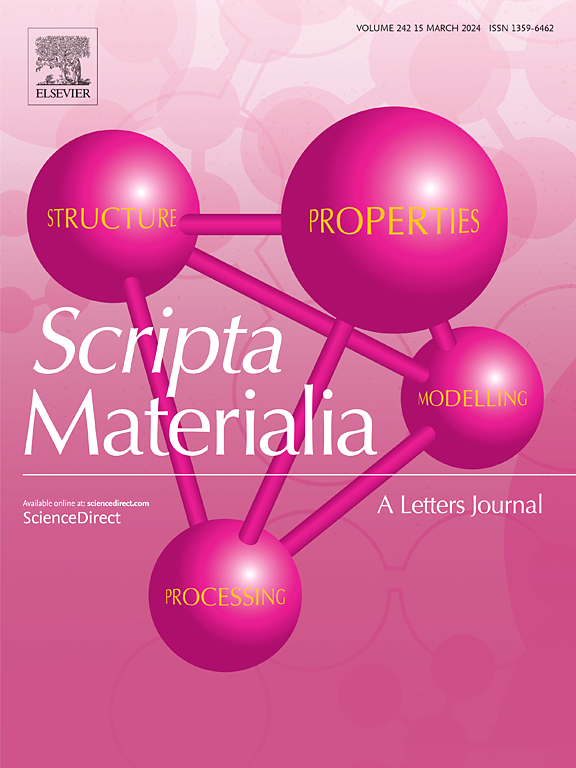金属间化合物中非共面位错偶极子的反常相互作用
IF 5.3
2区 材料科学
Q2 MATERIALS SCIENCE, MULTIDISCIPLINARY
引用次数: 0
摘要
有策略地引入金属间析出物来强化金属合金。与位错相互作用相关的严重塑性变形常常导致金属合金中金属间析出物的失稳。基于非共面位错偶极相互作用的分子动力学模拟,我们报道了典型金属间化合物(如L12-Ni3Al、L10-TiAl和B2-NiAl)中形成空位型缺陷(空位簇、空洞和柱位错环)的异常反应。与金属中的反应相比,金属间化合物中空位型缺陷的形成是由于位错偶极子的核能和相互作用力较大,而位错核内空位的形成能较低。这些空位型缺陷是不动的,限制位错的运动,使晶体局部失序,有利于合金元素的自扩散,从而使金属间相的结构稳定性恶化。本文章由计算机程序翻译,如有差异,请以英文原文为准。

Anomalous interactions of non-coplanar dislocation dipole in intermetallic compounds
Intermetallic precipitates are strategically introduced to strengthen metallic alloys. Severe plastic deformation associated with dislocations interactions often causes destabilization of intermetallic precipitates in metallic alloys. Based on molecular dynamics simulations of non-coplanar dislocation dipole interactions, we reported anomalous reactions of forming vacancy-type defects (vacancy cluster, void and prismatic dislocation loop) in typical intermetallic compounds (i.e. L12-Ni3Al, L10-TiAl, and B2-NiAl). Compared with the reactions in metals, the formation of vacancy-type defects is attributed to the larger core energies and interaction forces of a dislocation dipole and the lowering formation energies of vacancies within the dislocation cores in intermetallic compounds. These vacancy-type defects are immobile and pin the motion of dislocations, locally disorder the crystal, and facilitate self-diffusion of alloying elements, consequently deteriorating structural stability of intermetallic precipitates.
求助全文
通过发布文献求助,成功后即可免费获取论文全文。
去求助
来源期刊

Scripta Materialia
工程技术-材料科学:综合
CiteScore
11.40
自引率
5.00%
发文量
581
审稿时长
34 days
期刊介绍:
Scripta Materialia is a LETTERS journal of Acta Materialia, providing a forum for the rapid publication of short communications on the relationship between the structure and the properties of inorganic materials. The emphasis is on originality rather than incremental research. Short reports on the development of materials with novel or substantially improved properties are also welcomed. Emphasis is on either the functional or mechanical behavior of metals, ceramics and semiconductors at all length scales.
 求助内容:
求助内容: 应助结果提醒方式:
应助结果提醒方式:


